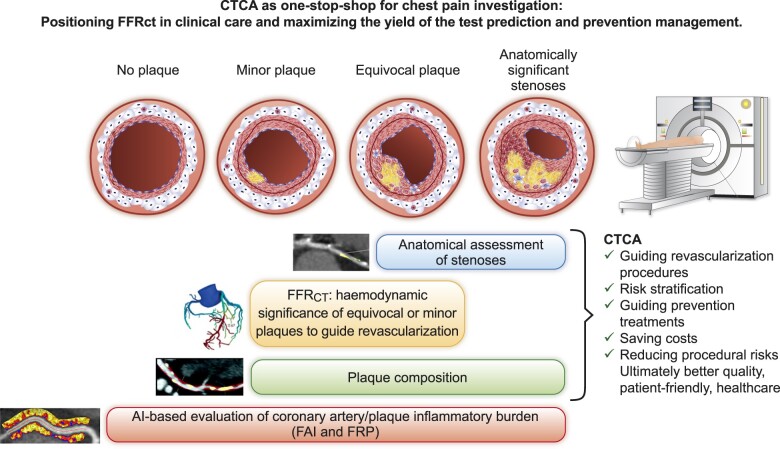Graphical Abstract.
CTCA is rapidly becoming a ‘one-stop shop’ for the investigation of patients with stable chest pain. With the rise of CTCA worldwide, distinct groups of patients will be frequently encountered: those with no detectable atherosclerosis, those with atherosclerosis which is minor, those with atherosclerosis of questionable haemodynamic importance, and those with obstructive disease clearly visible on anatomical assessment. FFRCT is likely to be most useful for patient care and resource minimization in the minor and equivocal stenosis groups where FFRCT can be a gatekeeper for invasive procedures. Within the group with no atherosclerosis, only new AI-based technologies, such as FAI, will be useful for adding yield to the CTCA through enhanced risk stratification, and such technologies can also be applied across all stages of disease. AI, artificial intelligence; CTCA, computed tomography coronary angiography; FAI, fat attenuation index; FFRCT, fractional flow reserve computed tomography; FRP, fat radiomic profile.

